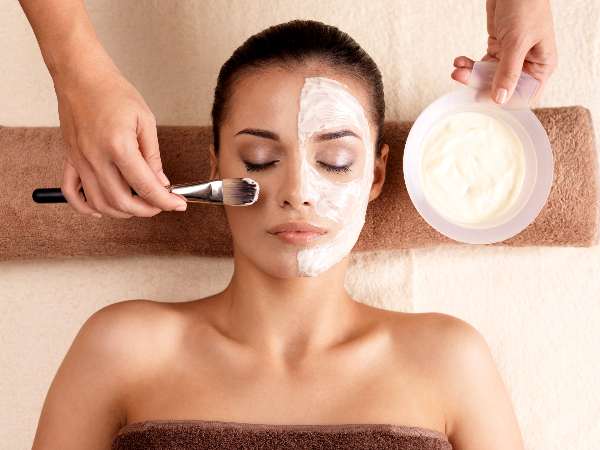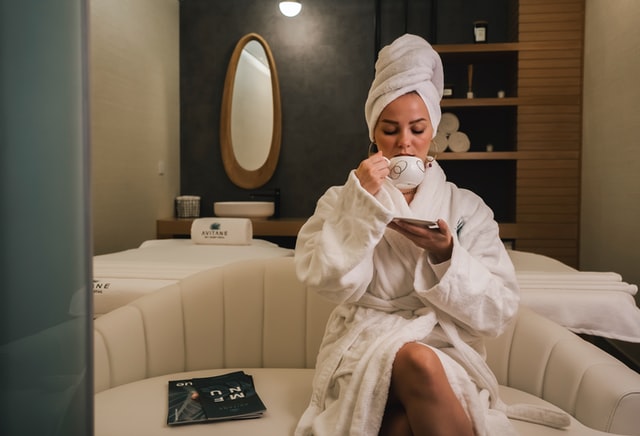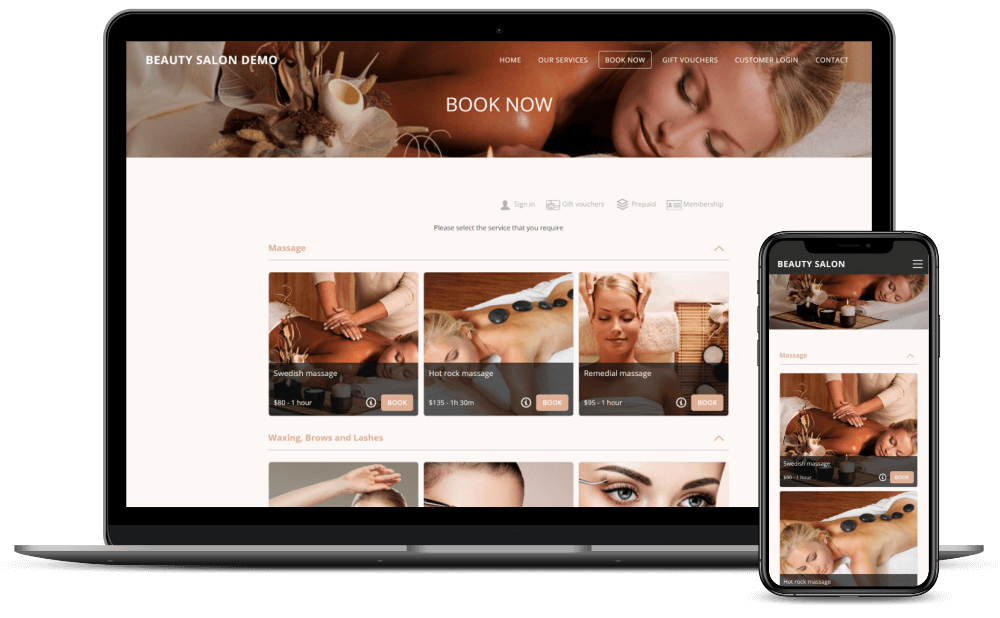
How To Start a Spa Business: Opening a Spa Checklist
Planning to start a spa business?
Congratulations, it’s definitely a great time to start one. While most spa businesses and businesses in the wellness industry, in general, have been heavily affected by the global COVID-19 pandemic in 2020 and 2021, many of these businesses have shown signs of bouncing back.
Not to mention, with how many businesses closed down during the pandemic, many prime locations and affordable financing are now available. On the other hand, the renewed interest of consumers in health has driven many of them to try new spa concepts and other wellness services in a more open-minded way.
Meaning, it’s more accessible (and affordable) to start a spa business, and the demands for your services are also potentially higher.
However, just because it’s a good time to start a spa business, doesn’t mean that you’ll automatically achieve success as soon as you’ve opened your spa. You’ll still need careful planning and execution in all the different areas from venue design to marketing to delivering service excellence.
In this guide, we’ll share the essential checklist to help you open a successful spa in an efficient and effective way.
Without further ado, let us begin.
Spa Business: What Makes a Good Spa Business
To be able to start a successful spa business, it’s important to first understand what makes a good spa business from the prospective client’s point of view, the only view that matters.

A prospective client will only visit a spa they deemed as “good” in their perception, and a satisfied client can further reinforce your reputation as a great spa via good online reviews, social media mentions, and so on.
Here are some important considerations in ensuring a good spa experience for your clients:
1. Hygiene
As a wellness business, it’s very important to set very high standards for hygiene and cleanliness. Train your staff thoroughly so they can maintain various aspects of the spa’s cleanliness according to an agreed standard.
The spa should look, smell, and feel clean. However, keep in mind that maintaining a clean look in your spa can be challenging if your space is relatively small since it can look cluttered, so you may need extra efforts and strategies to declutter the room.
2. Maintain good two-way communication
No matter how good your spa physically is: decoration, hygiene, great equipment, and so on, clients won’t see visiting your spa as a good experience if the human factors are lacking.
Train your staff and make sure they can communicate well with your clients. Employees who directly interact with clients (especially customer service) must be well-informed so they can answer your clients’ questions effectively. Aestheticians and therapists should be able to explain all the steps of treatment to clients when needed.

Good communications are important, so training your staff to be communicative and informative is crucial if you want to achieve success.
3. Health and safety
Keeping high health and safety stadards has always been important for spa businesses, but we can’t deny how the global pandemic forced clients to become more concerned about safety.
It is your duty as a spa business to ensure maximum safety to all your clients. You’ll need to invest in high-quality sterilizing equipment capable of providing high sterilization levels. Also, communicate to your clients that you do care about their health and safety, and you are putting the maximum efforts to prevent your clients from getting any infections or viruses.
4. Employ and partner with the right parties
Hire only qualified staff, and only partner up with certified and credible businesses/service providers.
For big investments like physical equipment, for example, it’s important to only purchase them from established and well-known companies that are well respected within the field.
5. The devil’s in the details
Pay extra attention to basic details like clean towels, delicious coffee, decent Wi-Fi speed, and so on. If the waiting time for your services is relatively long, it would make sense to invest in great couch and/or chairs so your clients can comfortably wait for your services.
Opening a Successful Spa: The Essential Checklist
Step 1: Initial preparation and planning
Write a business plan
Before you even start looking for a space to set up your spa, it’s best to first write a business plan for your spa business. A business plan is especially useful if you are planning to secure outside funding (i.e. an investor), but it’ll still be useful in providing a roadmap to success for your business. Think about your spa business’s mission, budget estimation, revenue goals, and so on. The more comprehensive your business plan is, the better.

While your actual business plan may vary depending on many different factors, a typical business plan for a spa business should include the following elements:
1. Executive summary
The first, and arguably the most important section of the spa business plan, since it will be the first section noticed by readers.
The executive summary offers an overview of what the business plan is about and what it will cover. As the name suggests, this section will be a ‘summary’ of the other following sections, so in most cases, it’s best to write this section last, once you’ve finished writing and polishing the other sections.
What should be included in the business plan’s executive summary section? Again it may vary, but the basic structure is as follows:
- The spa business’s vision and mission
- The purpose of starting this business
- What kinds of services you’ll provide
- What kinds of products will be sold in your spa
- Your plans for growth and monetization
And so on.
Keep the executive summary section short and to the point.
2. Business overview
This section offers a comprehensive overview of your spa business: the spa business’s purpose, vision, mission, goals, services/products offered, target market, and so on.
In this section, you should also discuss what value your spa business can offer your ideal clients (Unique Value Proposition), and what makes you different from other spas in the area.
3. Market research
Discussing the spa business’s primary target clientele, where to find this target audience, and how to attract this target audience.

4. Marketing plan
Should cover how you plan to promote your spa business and sell your services. Should cover the pricing strategy for your services and products, marketing and promotion strategies, ad so on.
5. Competitive
Discussing detailed competitive analysis results, comparing your spa business to your direct and indirect competitors.
6. Management/organization
This section should cover your spa business’s organization and management strategy. List your leaders and their qualifications, and describe their responsibilities within your business. Include the legal structure of your company if necessary.
7. Services/products
The details of the services and products your spa business offers. Include as much relevant information as you can.
8. Operational plan
This section should discuss in details of how you plan to run your spa business, like:
- Your opening hours
- Your location(s)
- How do you plan to expand the business over time?
- What kind of employees will the business need?
8. Finances
How much funding you’ll need to start the spa business, how the money is going to be spent, and how you plan to bring in revenue.
Research legal requirements
Research the legal aspects of opening a spa business, including:
- Whether your location requires you to be certified/licensed before you can provide spa services
- Insurance requirements (even when you are not legally required to be insured, it’s always a good idea to purchase appropriate insurance policies to protect your business.)
- How you should register your spa business name and company with your local and state government
- Other requirements you should consider
The type of spa you are opening
Perform your market research and competitive analysis to decide on what types of services you are going to offer. Will you offer unique services like Ayurvedic spa or Hammam spa? Will this be a generic wellness spa?

The type of spa you are going to make and the services you are going to offer will dictate what kind of space and equipment you’ll need (which will also affect the amount of capital you’ll need).
Business legal entity
Would this business be a sole proprietorship, LLC, partnership, or other types of legal entity? We’d recommend not starting your spa business as a sole proprietorship so that in the event of legal repercussions and/or debts, you can protect your individual self as it’s considered separate from the business entity.
Step 2: Finding an ideal space
Shop for a space
Whether you can secure an ideal location or not will literally make or break your spa business’s potential success.
Shop for an ideal space based on convenience, and here are some of the most important factors to consider when choosing a space for your spa business:
- Location: Location is obviously a very important factor to consider when shopping for an ideal space. Check for available public transport, traffic, overall accessibility, and other factors. Also, assess potential competitors: you wouldn’t want to choose a location that is already heavily populated with spas, salons, and other wellness businesses that may be your direct or indirect competitors.
- Size: you’ll need a space large enough for your spa business to operate and grow in, and you should especially consider whether the space will be enough to store your planned spa furniture and equipment.
- Decoration: will the space accommodate your preferred decoration and aesthetics? Also, if you’re tight on a budget, you may want to find a space that already looks great to minimize the need for decorations.
- Price: pretty self-explanatory. Spaces located in premium locations will obviously be more expensive, so it’s crucial to first identify a budget that works well for you (if you’ve completed your business plan beforehand, this shouldn’t be an issue). When purchasing or renting your space, keep in mind that you still need to allocate some of your budget to fill your spa with furniture and equipment, so don’t overspend on venue rental/purchase.
Plan your spa layout
When shopping for a space, carefully assess your option and think about where your furniture and equipment will go and fit. This includes checking the available space for storage and installation. The actual spa layout may vary depending on the types of spa you are planning to open and the equipment/furniture you’ll need on-premise, but here are the basics:
- Massage area: a hydraulic chair for massage therapists and staff, massage table, towels, a magnifying lamp, required machines, movable trolley for the machines, towels, supplies.
- Facial and body treatment space: facial and body treatment chair, hydraulic chair for the therapists, facial steamer, a magnifying lamp with lights, tools, movable trolley for tools, multi-functional machines.
- Manicure/pedicure area: treatment chair, a hydraulic chair for the manicurist, sterilized equipment, UV-light for nail polish, table, chair for customers, etc.
Hire a professional designer
If you have additional budget, you may want to hire a professional designer and discuss the concept of your spa business to them. A professional designer will be able to help design a functional and well-designed space for your spa business and for your staff to operate in.
Step 3: Shopping for spa equipment and supplies
The most crucial piece of furniture you’ll need in your spa business is typically the massage table, but here is a basic checklist of items you’ll need to start your spa business:
- Massage table
- Manicure table
- Pedicure chair
- Skin care equipment and supplies
- Towels
- Hydraulic chairs
- Shelves for products your spa will sell
- Shelves for documents
- Reception desk
- Furniture for your receptionist area
- Movable trolleys and carts
- UV lights
- Lamps
- Masks
- Sanitary items (gloves, etc. )
- Facial steamers
Step 4: Planning for financing
Estimate your budget
You need to estimate how much money you’ll need to start and run the business, and how you’ll be paying for the business.
You need to know exactly the number you need to reach to break even. It’s crucial to understand your weekly and monthly plan for when you’re going to run the business.

If you are planning to secure financing from investors, then figure out how you’re going to pay back the investment. If you are applying for a loan, then plan your payments.
Also, figure out how much money you’ll need for the day-to-day operations of the business: salary payments, when and how you’re going to pay your vendors, costs for supplies and utilities, etc.
If necessary, you may want to get professional advice in planning the financial details for your spa business.
Step 5: Set up the space (renovation and decoration)
Another important step in starting your spa business is to decorate and renovate the space to make it your own.
- Research other spas and collect photos/pictures of the spas that you like. Document the size, style, and shape of each spa. This can help you in finding inspirations and narrowing down your design options.
- Review local, state, and federal building regulations
- Identify potential safety issues and develop a safety plan
- Review maintenance and cleaning options
- Indoor/outdoor plants
- Lighting
- HVAC
- Sound system (speakers)
Step 6: Establish your team
Don’t forget the people aspect of your spa business: without the right talent running your business, you are simply doomed to fail. Consider hiring for at least the following positions:
- Massage therapists (certified/licensed)
- Aesthetician
- Manicurist/pedicurist
- Dermatologist (skin specialist)
- Receptionist
- Cleaning staff
- Spa manager
Step 7: Build a strong digital presence
In this digital age, having a strong online presence is crucial for success. If you are not visible online, your spa essentially doesn’t exist in the eyes of your clients. Focus on building a strong online presence in four key areas:
Professional website
With platforms like Wix and Squarespace, among others, it’s now very easy and affordable to build your own professional website, so there’s simply no reason not to have one. Make sure your site is well-designed, mobile-friendly, loads fast, and contains all the important information about your spa, including available services and prices if applicable.
Social media
In this social media age, it’s only obvious to promote your spa business on social media.
- Create and optimize profiles on relevant social media networks
- Create a social media marketing plan to invest in relevant paid social media advertising
- Reach out to relevant influencers so they can help promote your brand
- Run contests and giveaways
Online booking
Today’s consumers simply expect reliable, easy-to-use online bookings, and many would prefer to book your spa services outside business hours. Integrating 24/7 online appointment scheduling software to your website, app, and Google Maps listing is crucial if you want to maximize bookings and grow your business.
Choose a spa appointment scheduling software solution that supports Reserve With Google, so you can easily allow prospective clients to book your service from your Google Maps listing, as well as your website. Check for the following features:
- Online interactive calendar where clients can view available time slots and book the desired slot
- The ability to manage your online appointment calendar easily from your PC and mobile devices
- Automatic SMS and email notifications for customers
- Automatic notifications for staff for new, rescheduled and canceled appointments
- Customizable widget and calendar
- Easily adjust business hours
Google Maps SEO
Prospective clients will Google “spa near me”, “spa in (city name)” or other queries when they are looking to book a spa service. If your spa doesn’t appear on the results for these queries, you are going to miss out on these prospective clients. In short, you’ll need to optimize your presence on Google Maps, and you can do it by:
- Claiming and verifying your Google My Business listing
- Optimizing your listing, focus on providing complete and accurate information for your prospective clients
- Encourage (positive) reviews from your clients, mainly on Google Maps but also on relevant review sites
- Build local citations by listing your spa business on relevant online directories
The key to a successful online presence is consistency. Be consistent in establishing your online branding, as well as in maintaining your online reputation.
Step 8: Prepare a marketing plan
Congratulations! Now that you’ve reached this step your spa business is basically ready to rock!

Yet, no matter how perfect you’ve set up your spa, it won’t be a successful one if you can’t attract enough clients. Develop a comprehensive marketing plan for your spa business while considering the following areas:
- Establish a comprehensive pricing strategy for your different services (and different tiers for each service)
- Email marketing plan
- Social media marketing
- Advertising plan (online/offline)
- Influencer marketing
- Cross-promotion with other businesses in the area
- Discounts and giveaways
- Customer loyalty and referral program
Conclusion
While it’s definitely a good time to start a spa business, it doesn’t mean you’ll automatically achieve success as soon as you’ve started one.
Proper planning and careful execution are important if you really want to continuously attract new customers, retain existing clients, and grow your business, and the checklist we’ve shared above can help you in planning all the details required to open your spa business.


